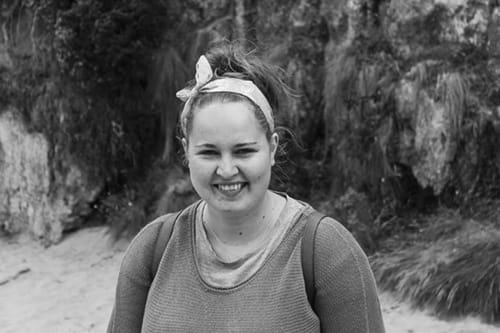The Amazebalz journey
It was during a design theory class that focused on the problem of ocean plastics that Stine’s award-winning mock project, Amazebalz, came to fruition. “The main problem we had to solve was how to get products to consumers without generating plastic waste,” says Stine. During the course of her research for this project, she was shocked by the facts she uncovered about plastic usage. One of the statistics that troubled her was that Australians use 198 million shampoo bottles per year. Her mock project, Amazebalz, was developed with the intention of eliminating throwaway shampoo bottles by designing a dissolvable shampoo bar. The experience allowed Stine to understand the process involved in developing and designing a sustainable product.Billy Blue College of Design at Torrens University Australia champions sustainable development
Stine enjoyed that Billy Blue is a small college; she felt connected and loved that people got to know each other better than they might in larger schools. She also found the college very hands-on and supportive. “Billy Blue is very industry-minded, with industry professionals teaching classes. You get all the tools you need to succeed in the industry,” she says.Stine was nominated by Billy Blue to represent the college in Cumulus Green 2020, a world-class design competition focusing on creating solutions to sustainable living, with her Amazebalz project. The project – a series of dissolvable shampoo balls that represent an alternative to plastic shampoo bottles — received an honourable mention in the competition; a result that Stine was elated by. “I can’t help feeling proud,” she tells us.
One of the things that Stine enjoyed most about her Commercial Interior Design course at Billy Blue was the combination of different classes. Her studies didn’t just focus on interior design theory; they also combined courses on graphic design, communications design, fashion and photography. She appreciated that the course included many hands-on projects, which gave students a rounded understanding of what it is like to work in interior design.Stine now has a fantastic portfolio of work, which includes a number of exciting projects she’s worked on throughout her studies. One of her favourite projects required her to improve an existing restaurant by connecting it to its local area, which had a strong maritime history. After researching the area, she saw that she could incorporate sustainable materials into her design, re-created the restaurant space using materials from the beach and details from ships.
Stine recently landed an administrative role at a design firm, where she is now starting to help out on small design tasks.“I hope to develop my interior design career further, and I’m already putting my skills to use by renovating a house I’ve just bought,” she says.
Advice for other international students
Stine says the most valuable thing you can do as an international student is to embrace the local lifestyle and surround yourself with locals. “Immerse yourself in the culture and hang out with local people so you can experience the fullness of the country,” she says. She also recommends going out, meeting people, and eating pavlova (a very delicious Australian dessert).
Find out more about how Stine settled into Australia and set up a life for herself in Melbourne by heading over to Insider Guides.




